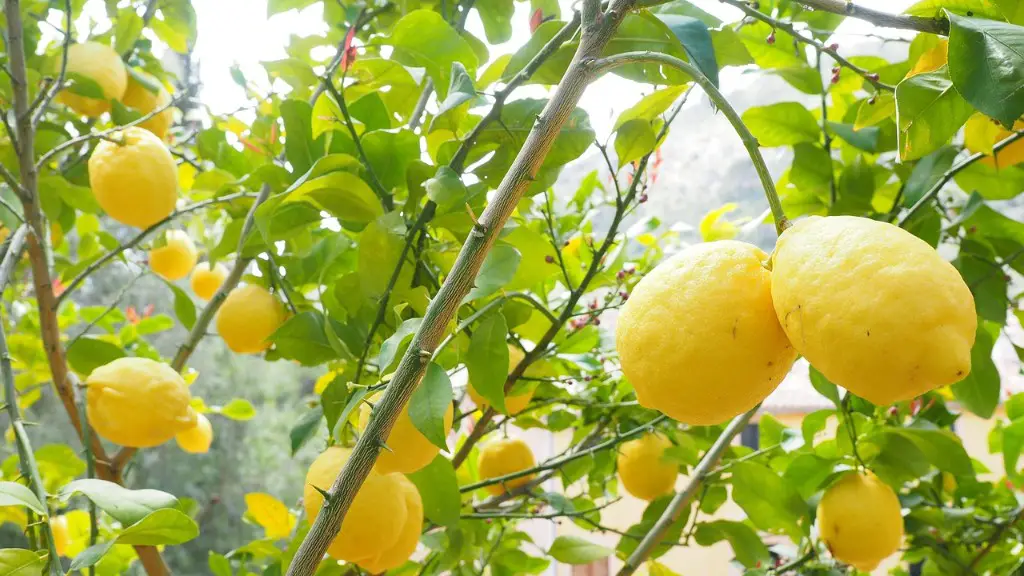Step 1: Prepare the Pit
Avocado pits can be tricky to germinate, but with the right preparation, success is possible. First, it’s important to choose the non-bruised pit from a ripe avocado. To prepare the pit for planting, it must be carefully removed intact from the fruit. Use a spoon to scoop it out, as cutting the pit with a knife can cause it to break apart. The pit should then be washed and dried.
Step 2: Start the Germination Process
To start the germination process, the avocado pit must be suspended over a container filled with water. It should be held using toothpicks inserted into the pit so that the bottom half is immersed in the liquid, while the top lays above the surface of the container. Keep the water level at least a half-inch above the bottom of the seed. The container should then be placed in a sunny spot.
Step 3: Change The Water Regularly
Early on in the germination process, the water should be changed daily and replenished as needed. Some pits may produce roots or a growing sprout at the base within a few weeks. If no signs of change are visible, the water should still be changed once a week to prevent any unwanted bacteria from collecting on the pit.
Step 4: Plant The Sprouted Pit
Once the seed has sprouted, it is ready to be planted. Fill a pot with good quality soil and make a shallow hole in the center. Place the pit into the hole and carefully fill the sides with soil to hold it in place. The top of the pit should remain exposed above the soil line. The soil should be damp but not overly saturated.
Step 5: Place The Avocado Tree In A Sunny Spot
Finding the right location for your avocado tree is important for its growth and development. Place the plant in an area that receives bright indirect sunlight for at least six hours a day. Avocado trees tend to like temperatures between 65 to 85°F (18-29°C) for optimal growth.
Step 6: Keep the Soil Slightly Moist
It is important to monitor the soil moisture of your avocado tree. To maintain proper soil moisture, water the soil regularly and allow it to dry out between waterings. The soil should never be completely dry or overly wet, as either one can cause waterings.
Step 7: Fertilize The Avocado Tree
Fertilizing your avocado tree is an important part of providing the right nutrients for proper growth. Choose a fertilizer specifically formulated for avocado trees and use it as directed on the label. Depending on the type of avocado tree and the age of the plant, the fertilizer should be applied anywhere from once every month to once every three months.
Preventing Insect and Disease Damage
Avocado trees can be susceptible to insect and disease damage, so it is important to maintain a regular routine for inspection. Check for pests and fungal issues such as spider mites, scale insects, and bacterial spot disease. If any are found, treat the plant with an appropriate insecticide or fungicide.
Harvesting the Fruit
Once the avocado tree is fully grown and producing fruit, the avocados can be harvested when they are fully ripe. Harvesting fruit at the peak of ripeness ensures that the avocados are at their sweetest and fullest of flavor. Plucking the fruit from the tree with care helps maintain the integrity of the branch.
Additional Care Tips
Avocado trees need a certain amount of care to grow and thrive. Pruning away dead branches and making sure the plant is consistently well-watered will help maintain a healthy avocado tree. Mulching the tree can provide additional benefits by maintaining the right levels of soil moisture and preventing weeds from competing for water and nutrients.
Protecting Avocado Trees From Cold Weather
In areas with cold winters, avocado trees must be protected from the elements. One way to do this is to cover the plant with a thick layer of mulch or place a burlap bag over it to shield it from frost. If temperatures drop below 23°F (-5°C), providing the tree with extra insulation such as a blanket or sheet wrapped around the trunk of the tree can protect it from frost damage.
